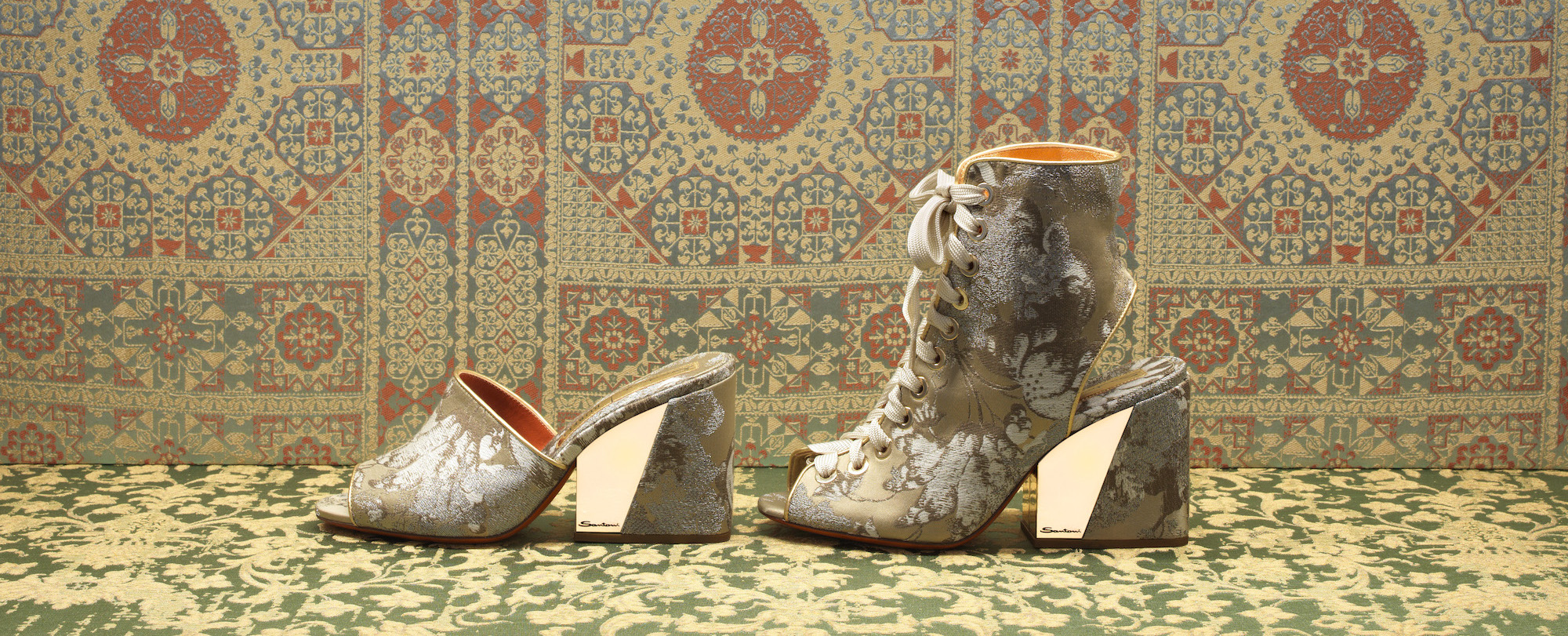Rubelli’s clients and collaborators are like a romantic rollcall through history, with Gio Ponti, Grace Kelly, La Scala and Teatro La Fenice among them – yet they are resolutely future-facing, as a new generation of designers such as Luke Edward Hall testifies. Their current CEO, Nicolò Rubelli, reveals the source of their enduring appeal
Established Italian textile house Rubelli was set up by Lorenzo Rubelli in Venice in 1889, but its aesthetic was arguably formed in the early 18th century, when Italy eagerly adopted the ultra-ornate French Rococo style.
During the Middle Ages and the Renaissance, Venice was a formidable maritime and financial power, founded on trading silk, grain and art. By the Rococo era, however, Italy was in economic decline. Yet Venice’s wealthier denizens continued to favour opulence, and the city’s brand of Rococo was more exuberant than its French counterpart.
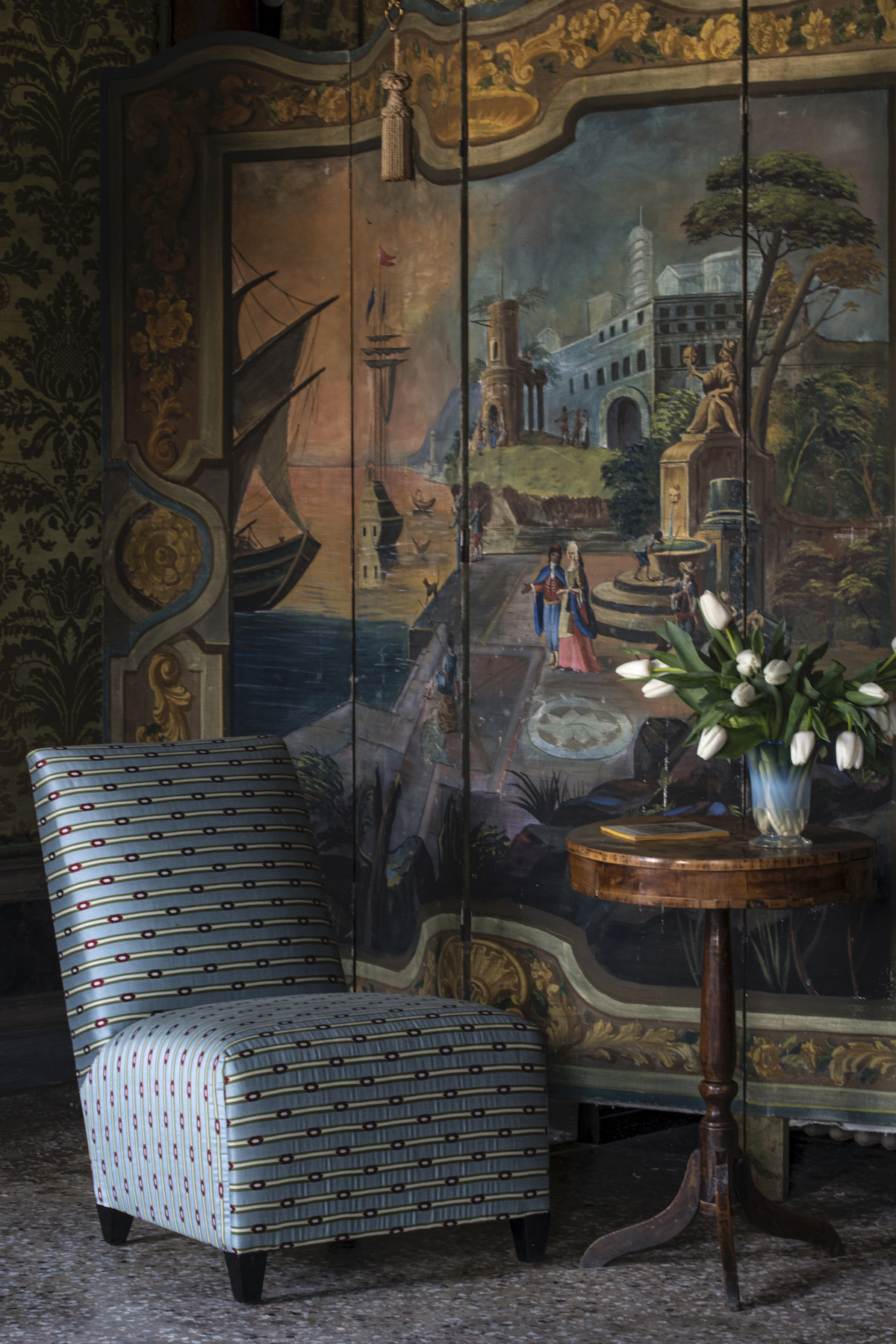

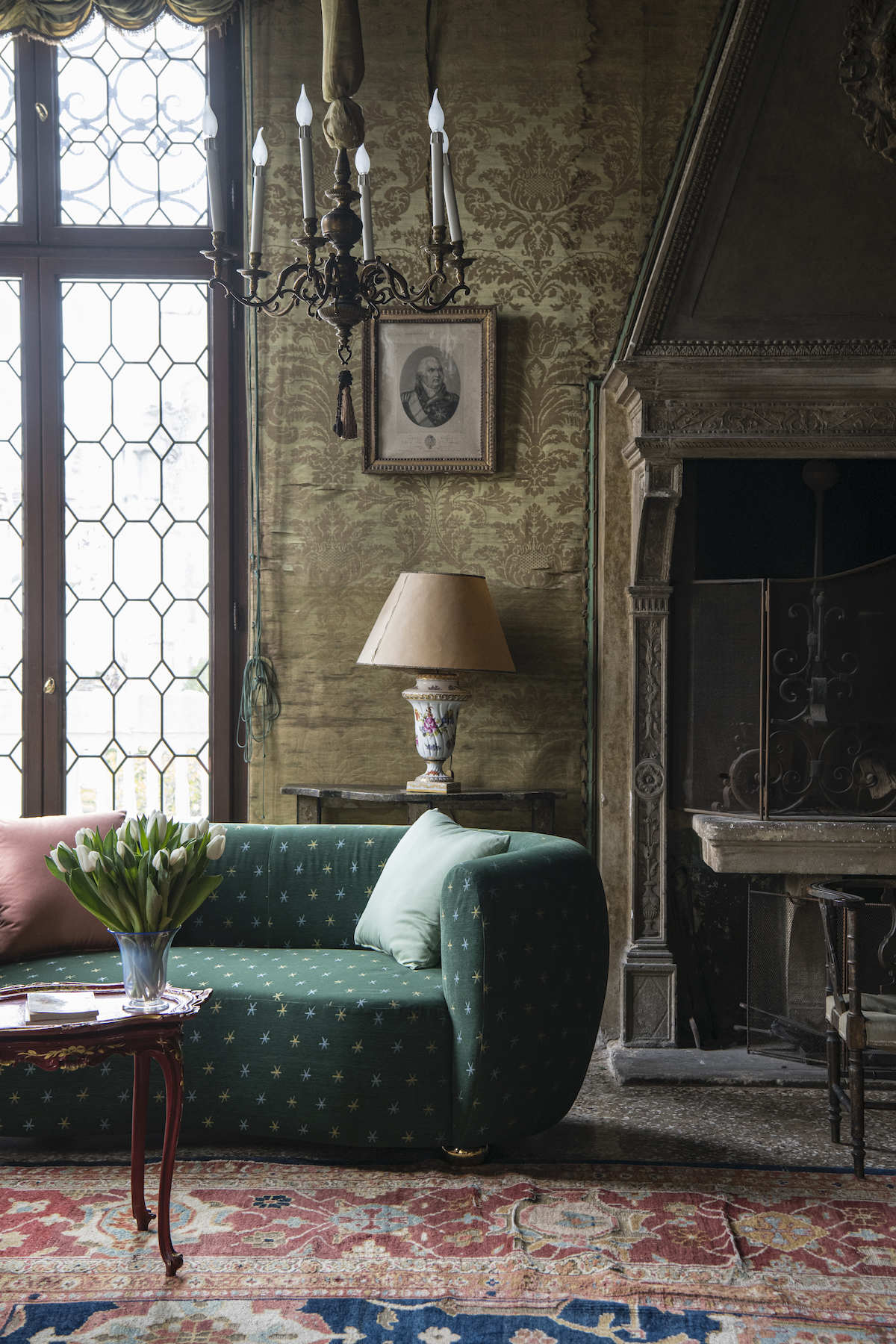
Commodes were elaborately painted with scenes in the style of such artists as Giovanni Battista Tiepolo, while Venetian chandeliers, fashioned from jewel-bright glass produced on the island of Murano, in the Venice Lagoon, were unusually flamboyant. Even bedrooms were sumptuously adorned with silk, damask and velvet drapery. High-end textiles continue to be produced today by such family-run firms as Rubelli and Tessitura Luigi Bevilacqua.
Yet Venice also boasts an avant-garde and modernist pedigree. Its prestigious art and architecture biennales were set up in 1895 and 1980 respectively. In 1951, eccentric American heiress Peggy Guggenheim began to show her collection of Cubist and Surrealist art to the public at her Venice museum, the Peggy Guggenheim Collection. And highly esteemed mid-century architect Carlo Scarpa’s minimalist projects discreetly permeate the city.
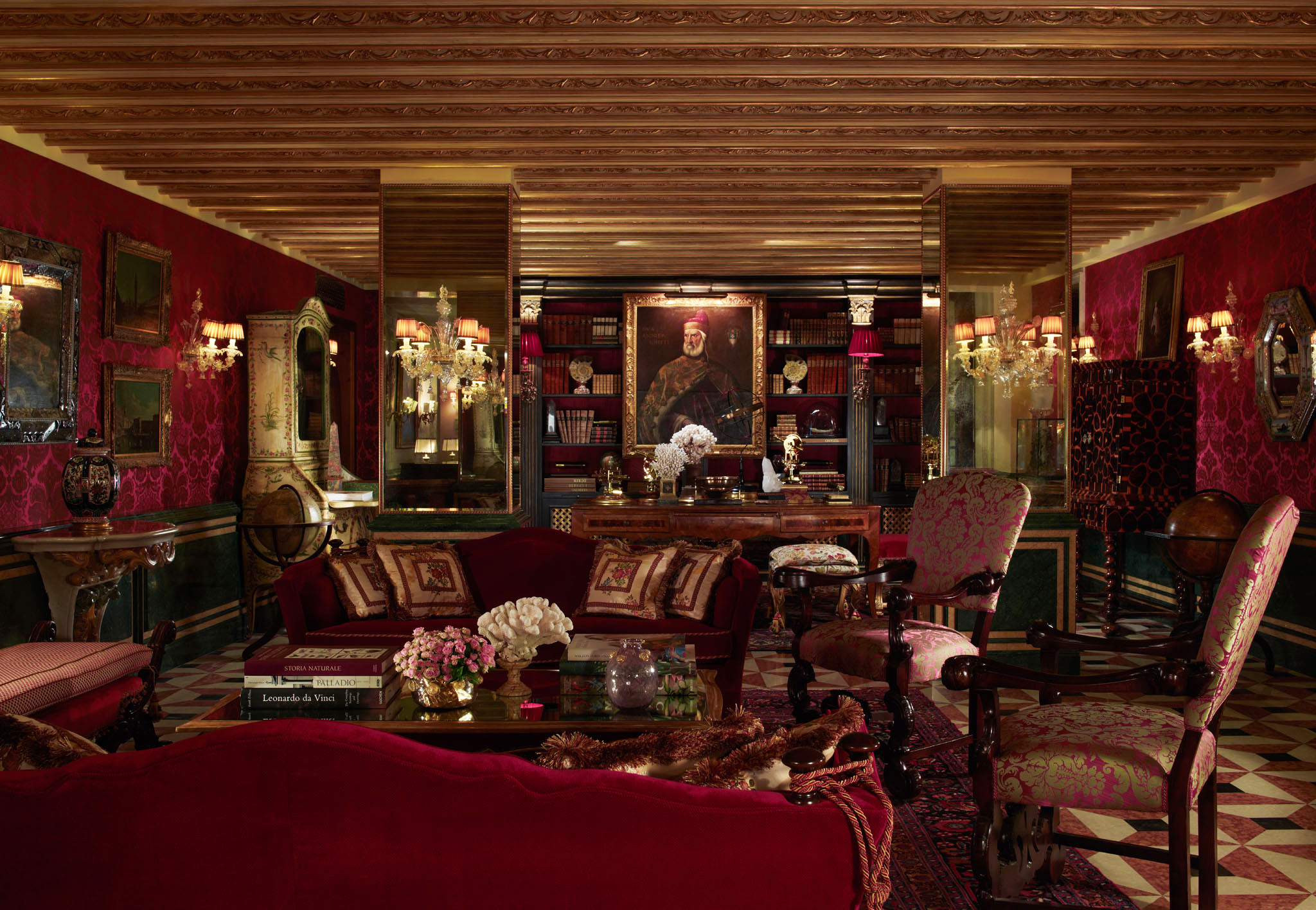
Rubelli’s textiles straddle this intersection of tradition and modernity. Its fabrics also reference the omnipresence of water in and around Venice. Rubelli supports local culture – it sponsors the Peggy Guggenheim Collection – and has supplied fabrics to iconic cultural venues in dire need of restoration. When Venetian opera house Teatro La Fenice was ravaged by a fire in 1996, Rubelli rushed to provide fire-retardant fabrics to replace those lost (it was able to refer to examples held in its archive). It has also provided fabrics for La Scala in Milan and the Albertina Museum, Vienna.
We say to designers: ‘Bring us your ideas. Let’s see what works’.
Nicolò Rubelli, CEO of Rubelli
Rubelli collaborates with contemporary architects and designers, including US architect Peter Marino and British design prodigy Luke Edward Hall. Marino’s first collection for Rubelli, Venetian Heritage, captures reflections of light on Venice’s lagoon, its fiery orange and ice blue hues recalling the palette of Tiepolo. A proportion of sales of the collection help fund the restoration of Venetian works of art.

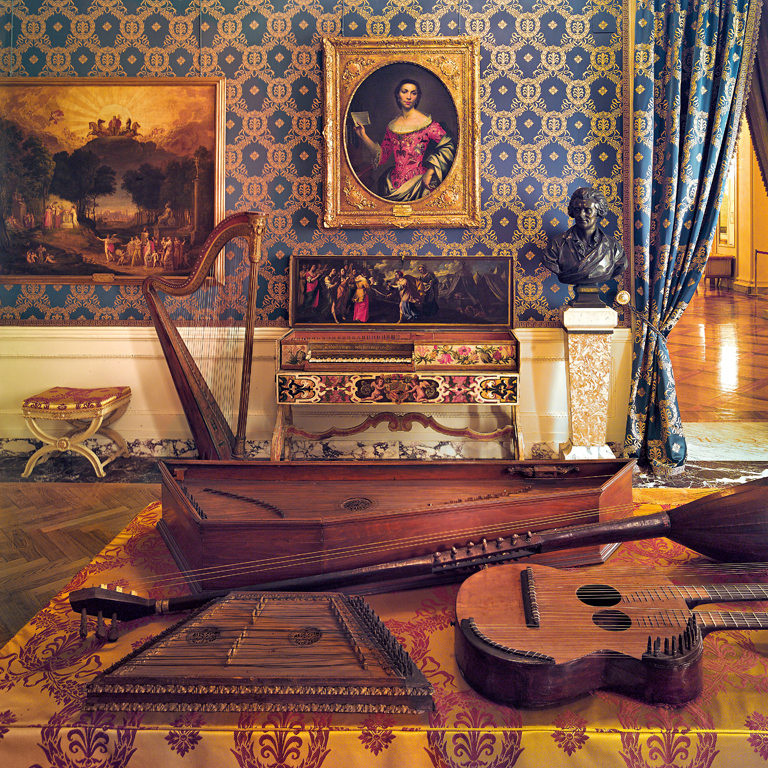
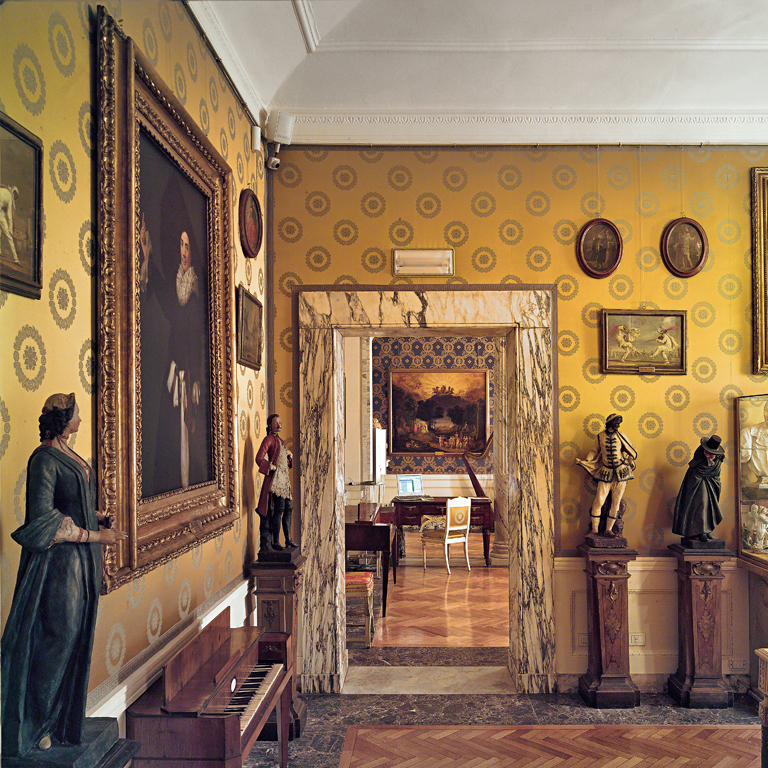
Rubelli also champions home-grown talent. In 2017, it launched its Pila 47 chair, dreamt up by Paolo Emanuele Nava and Luca Maria Arosio. By squashing down one side of the thin cylindrical wall of fabric forming its upper half, this design cleverly yields a robust backrest.
The company originated when Lorenzo Rubelli bought a Venetian mill famous for silk soprarizzo velvets, owned by Giovanni Battista Trapolin. Trapolin had patented the Venetian velvet soprarizzo – also called ciselé – constructed using a double-pile technique, one pile being taller and light-absorbing, the other cut smoother and reflecting light.
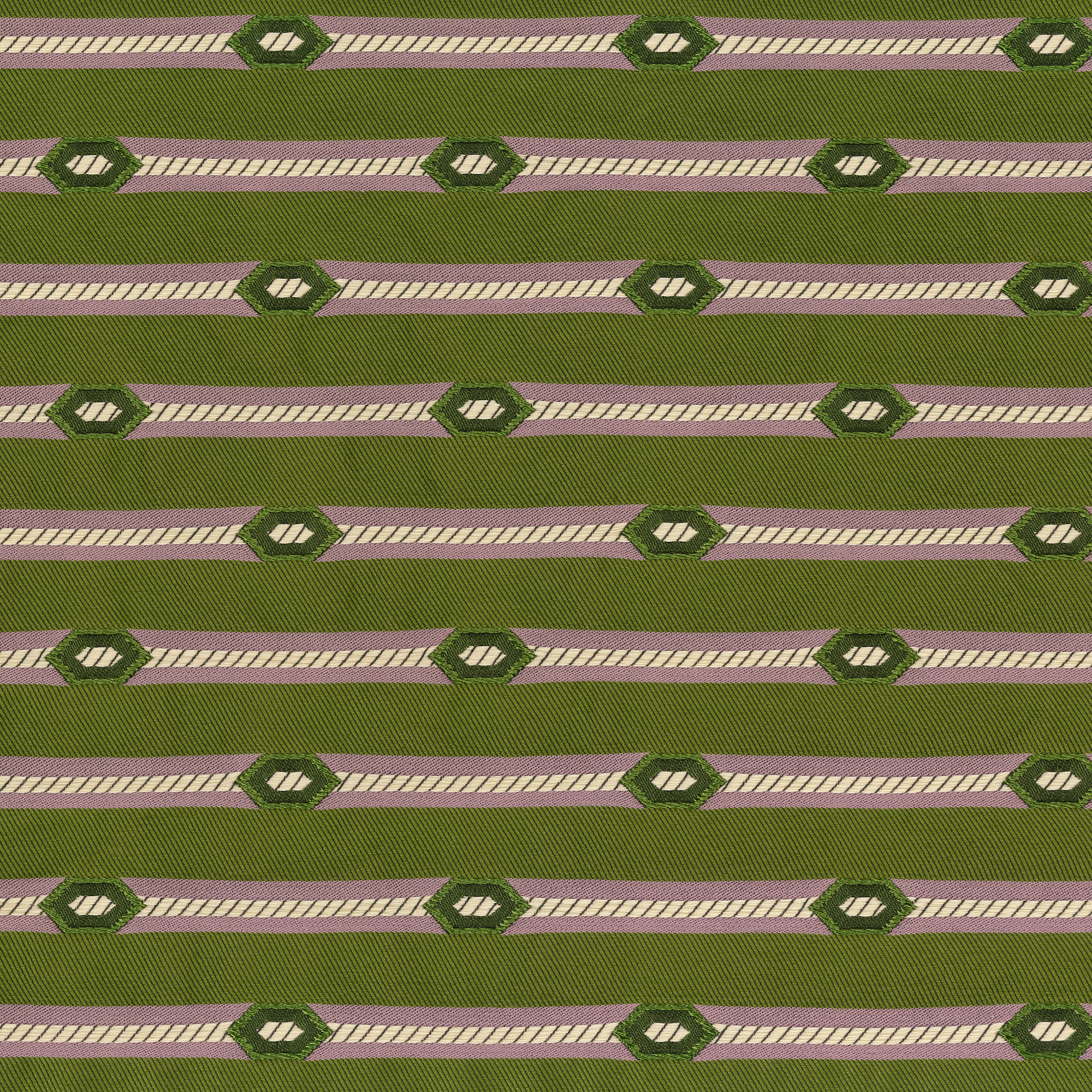
Revivals of old styles were in vogue in the late 19th century, and it’s fair to say that, early on, Trapolin Rubelli, which specialised in reinterpreting antique silk fabrics, wasn’t known for its originality. But at the turn of the 20th century, it embraced modernity, creating textiles in the Liberty style – the Italian variant of Art Nouveau.
In the 1920s, Rubelli dreamt up Art Deco textiles and developed hard-wearing upholstery fabrics for trains, ocean liners and theatres. In the 1930s, it collaborated with such forward-looking designers as Gio Ponti, whose fabrics for Rubelli were exhibited at the Venice Art Biennale in 1934. One of these, the idiosyncratic Rattoppato, a velvet jacquard fabric bearing lines resembling noughts-and-crosses grids, is still in production.
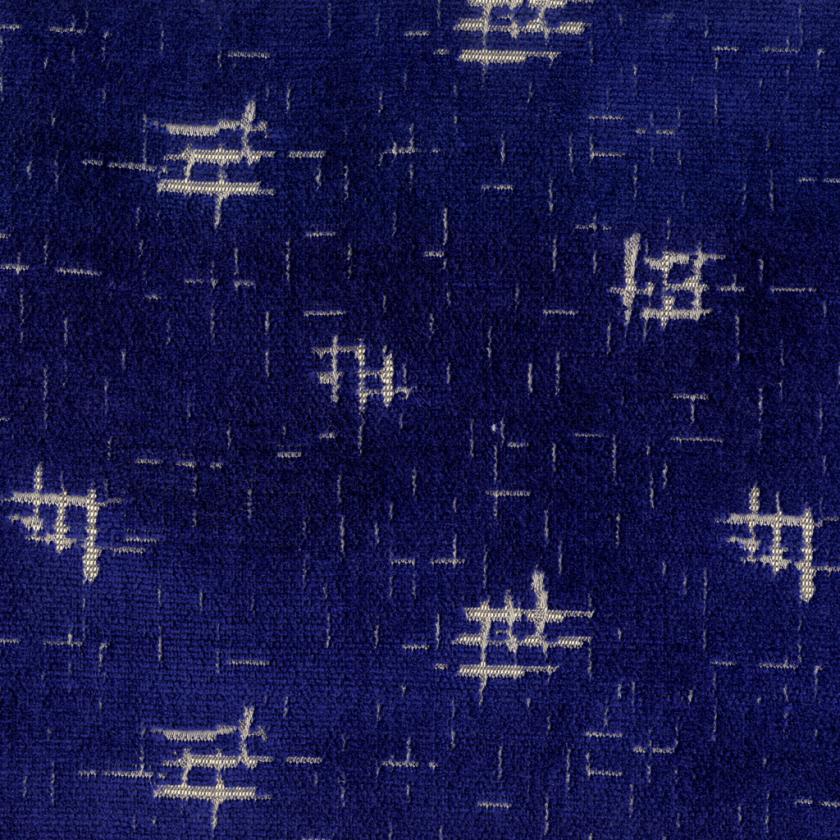
When Lorenzo’s great-grandson Alessandro joined the company in the 1950s, he transformed it into a design-led brand that expanded internationally. In 1958, Grace Kelly sported a handbag, created by Venetian fashion designer Roberta di Camerino, covered with a ritzy soprarizzo velvet, courtesy of Rubelli.
Americans are proud of their homes. They might take guests out for dinner but first, they’ll invite you for a cocktail and show you round their house.
Nicolò Rubelli, CEO of Rubelli
In the 1970s, Rubelli was expanding. The company opened a showroom in Paris, bought a majority stake in US brand Donghia, and acquired a mill in Cucciago near Como in 1984. Still in operation, it’s equipped with 18th-century and state-of-the-art contemporary looms. More recently, Rubelli began producing textiles for Armani / Casa, and in 2018, Alessandro set up the Rubelli Foundation at Ca’ Pisani Rubelli, a 15th-century palazzo that houses an archive of over 7,000 fabric samples.
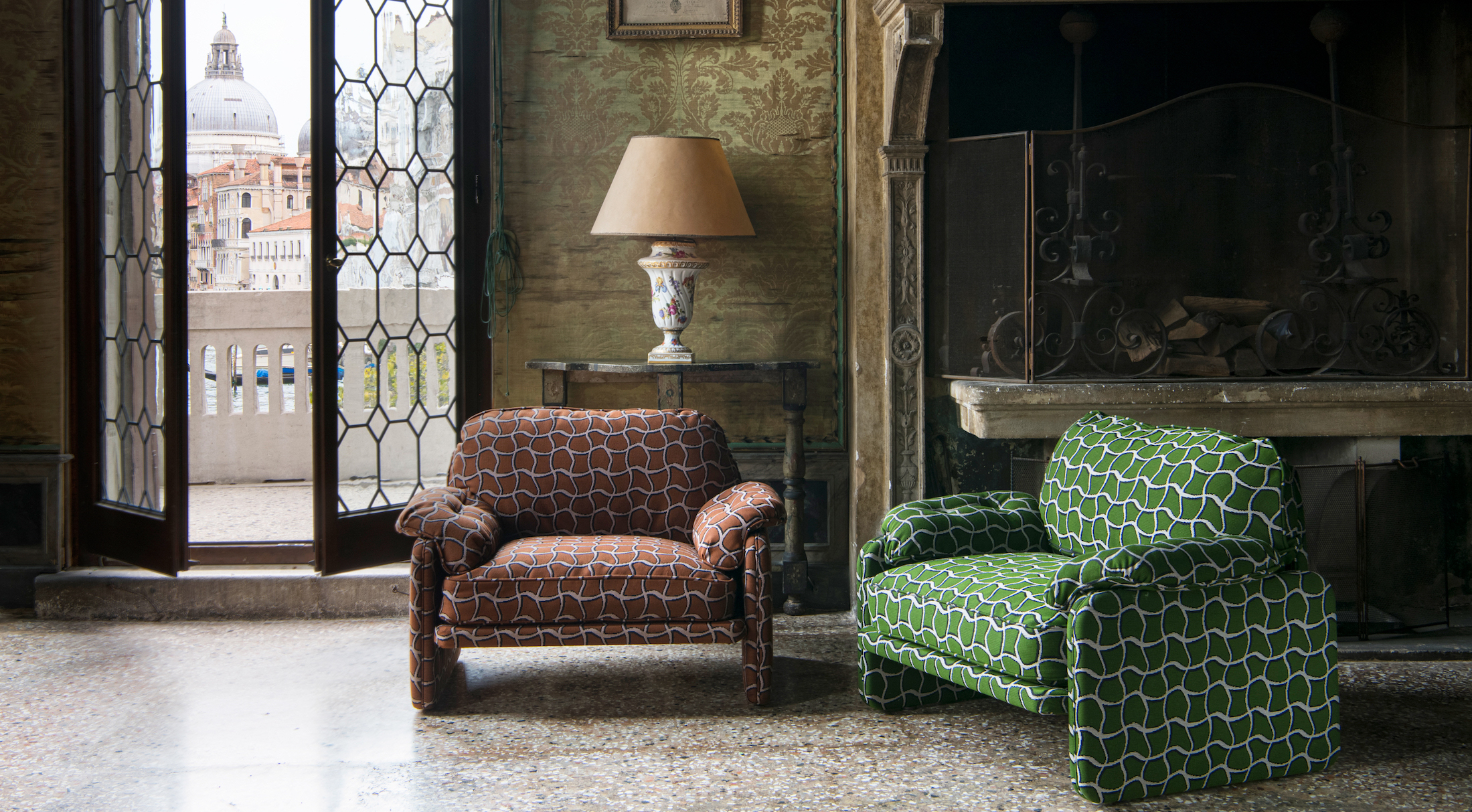
I met Alessandro’s son Nicolò Rubelli, the brand’s current CEO, at Rubelli’s Milan showroom during Milan Design Week and witnessed the unveiling there of a theatrical installation simulating waves inspired by Venice’s lagoon, constructed from velvets and silks in aquamarine and jade green, conceived by Italian design duo Zanellato/Bortotto. “We’re continuing the heritage of silk-weaving and opulent, rich fabrics Venice is renowned for,” says Nicolò. “Fortunately, we’re now living in more maximalist times, so we are thankful for that. Maximalism is more our cup of tea.”
Nicolò, articulate and animated, chats at length, reaching now and then for particularly noteworthy bolts of fabric. At one point, he pulls out a 1960s fabric with an abstract, web-like pattern. “It’s inspired by American sculptor Claire Falkenstein’s design of gates at The Peggy Guggenheim Collection,” he says. Later, he leads me to a tucked-away room filled with fabrics, old and new, in museum-like display cabinets. He reveals a 1950s kimono with dusky pink motifs of amphora with bleeding outlines – the springboard for another fabric, Secret Venus.
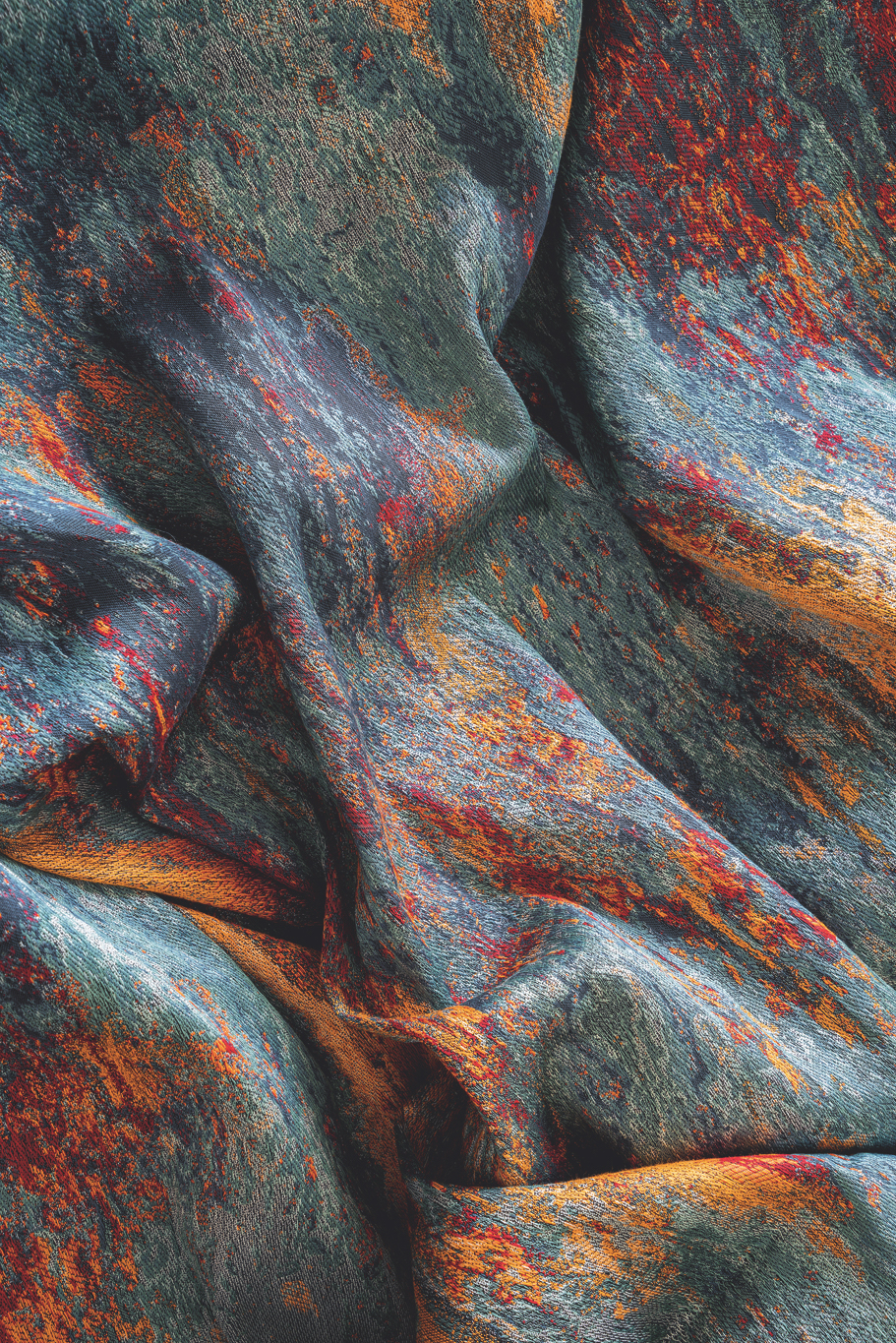
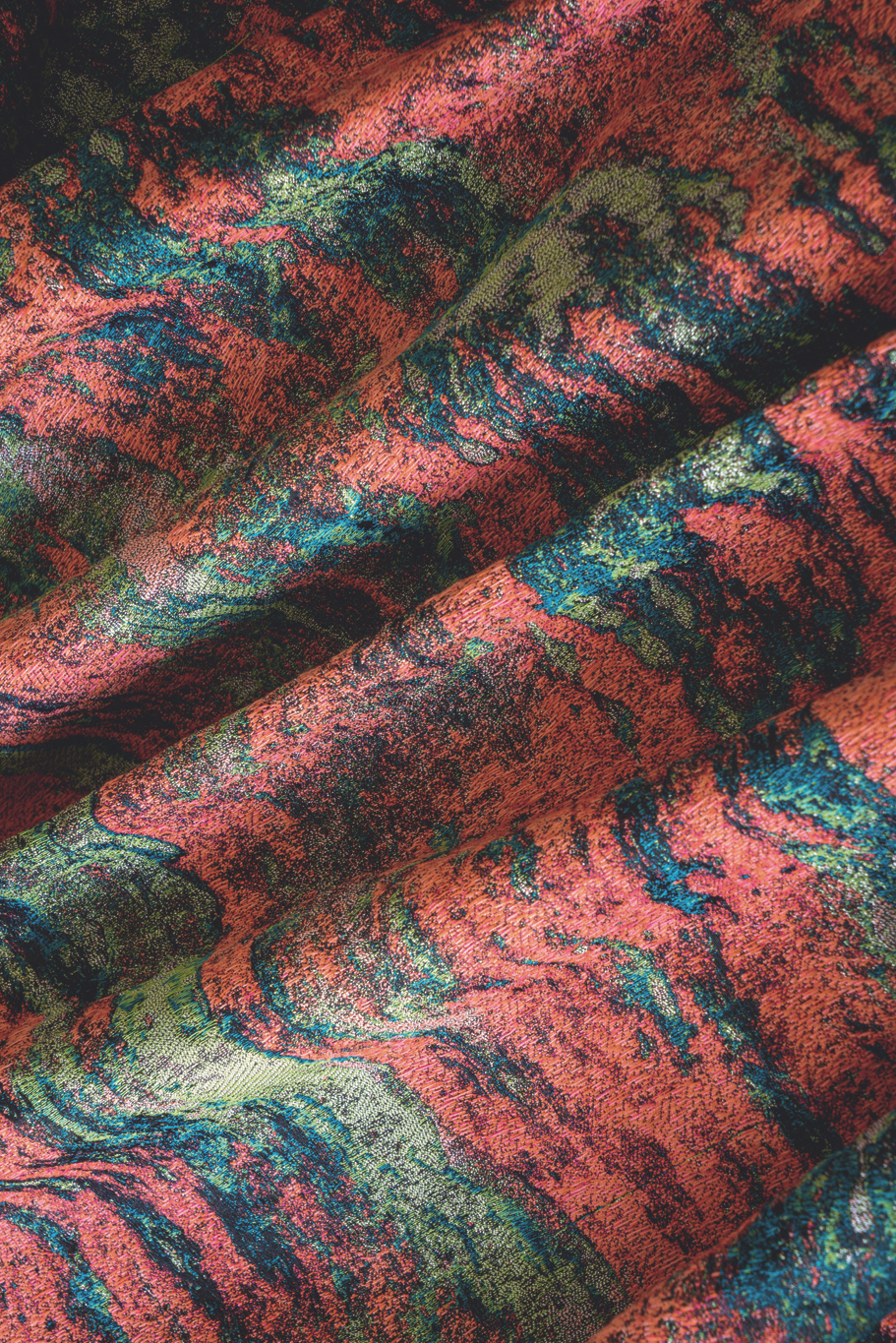

Today, Nicolò oversees new collections, working closely with Rubelli’s design director Alberto Pezzato. A recent example is Luke Edward Hall’s joyful Return to Arcadia collection, which teems with Neoclassical and Italianate motifs – classical busts, lyres and stripes in shades such as olive, lemon and lilac. Rubelli also collaborates with Stockholm-based Venetian designer Luca Nichetto, who has created the abstract fabric Coriandoli, inspired by confetti tossed by revellers at the Venice Carnival.
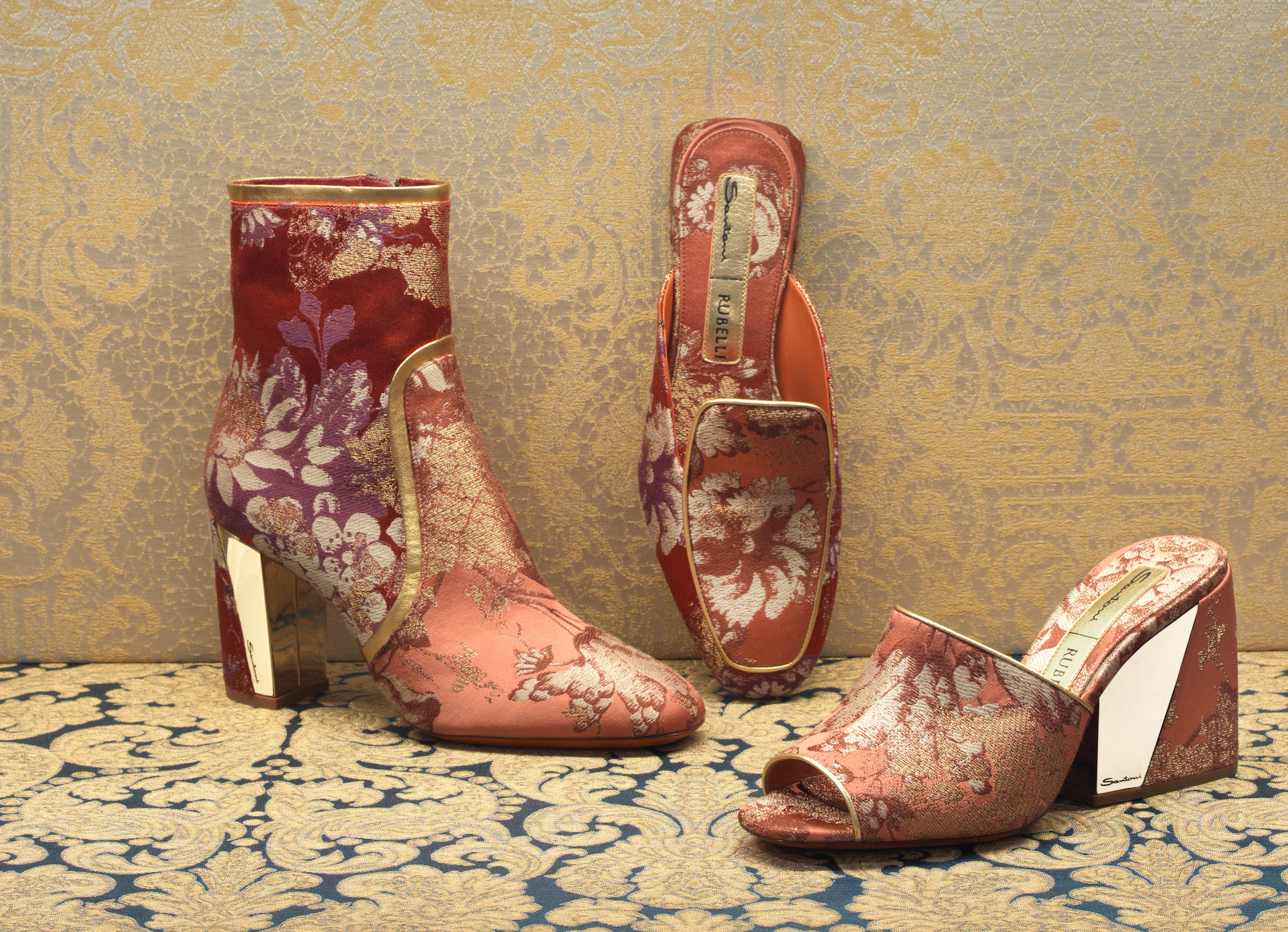
And emphasising Rubelli’s strong relationship with the US, one of their biggest markets, Nicolò says: “Americans are proud of their homes. They might take guests out for dinner but first, they’ll often invite you for a cocktail and show you round their house.” Nicolò says that Rubelli’s commercial nous sets limits in terms of which fabrics go into production: “We say to designers, ‘Bring us your ideas. Let’s see what works’. Peter and Luca know what they want, then we tell them what, in our experience, the market allows for.” While Rubelli enforces such discipline, judging by the inventiveness of its designs, it encourages playfulness and experimentation. It’s anyone’s guess what sumptuous yet unmistakeably modern fabrics it will spring on the world next.
Read more: Textiles | Interiors | Vintage | Design | Mid-Century | Italy



